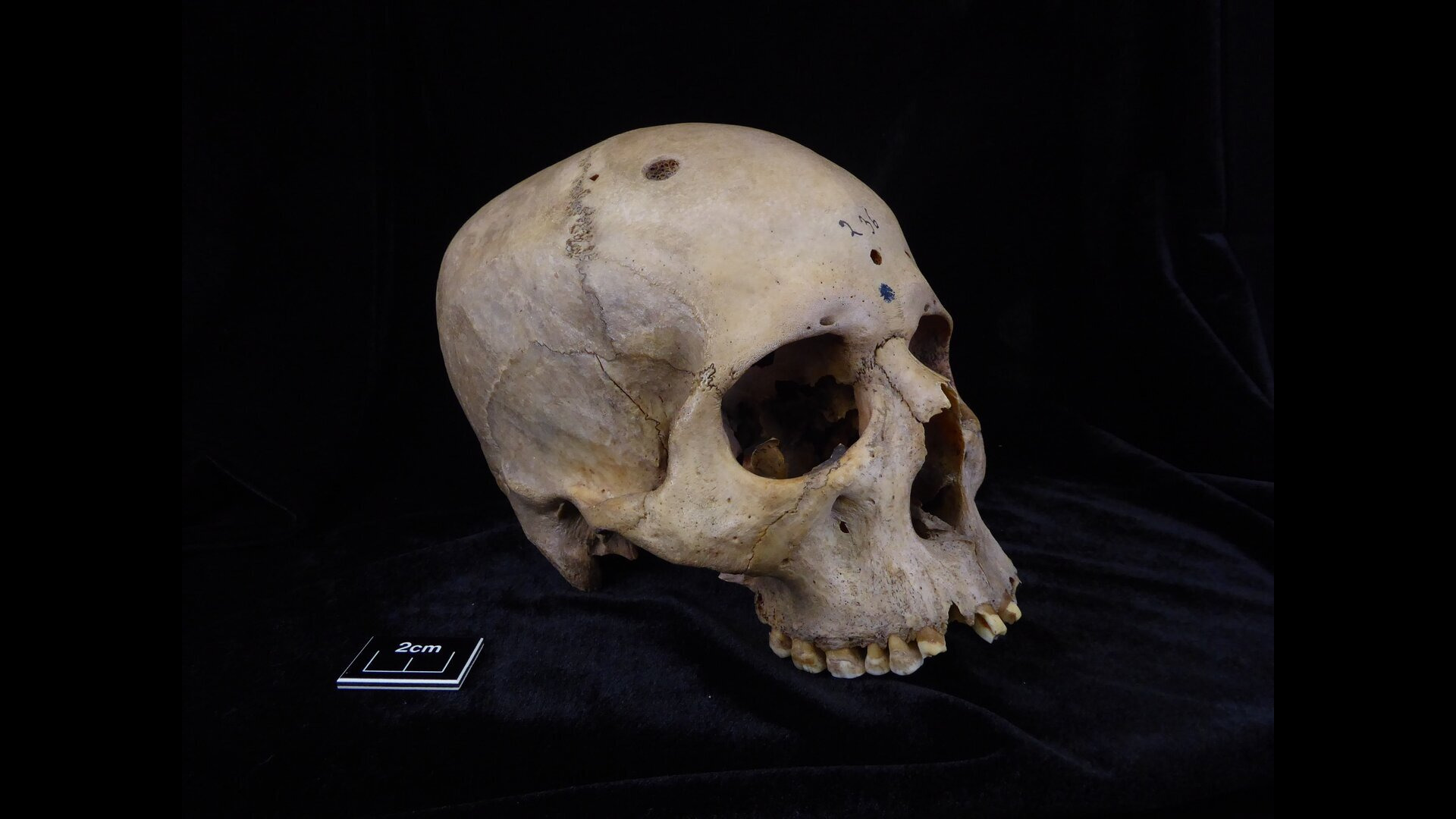According to a study published in the journal Frontiers in Medicine, cut marks found on a 4,000-year-old skull could be indications that the Ancient Egyptians tried to treat cancer.
Some of the earliest documented evidence of medical practice and surgery originates from the Ancient Egyptian civilisation. Physicians had some knowledge of human anatomy and surgery was a common practice for treating various conditions and injuries.
“We see that although Ancient Egyptians were able to deal with complex cranial fractures, cancer was still a medical knowledge frontier,” said Tatiana Tondini, a researcher at the University of Tübingen.
To study the limits of traumatological and oncological treatments in Ancient Egypt, the researchers examined two human skulls that showed signs of malignant neoplastic and traumatic lesions.
One of the skulls (designated 236) is a male individual who lived around 2687 and 2345 BC. Microscopic observation showed a large lesion consistent with excessive tissue destruction and around 30 small metastasised lesions.
Indications of cutmarks around the lesions suggest that a surgical attempt was made to provide treatment and could be one of the earliest examples of cancer treatment.
“This finding is unique evidence of how ancient Egyptian medicine would have tried to deal with or explore cancer more than 4,000 years ago,” said Professor Edgard Camarós, a palaeopathologist at the University of Santiago de Compostela.”
The other skull (designated E270) belonged to a woman who lived around 663 and 343 BC. Skull E270 also shows a big lesion consistent with a cancerous tumor and tissue destruction. An examination revealed two healed lesions from traumatic injuries, one likely occurring from a close-range violent event using a sharp weapon.
According to the researchers “This provides challenging bioarchaeological observations concerning gender-related activities, such as involvement in warfare. Actually, some authors provide skeletal-related data that suggests a similar ancient Egyptian male–female ratio of traumatic injuries in the context of political and social conflict.”
Header Image Credit : Tondini, Isidro, Camarós, 2024
Sources : Boundaries of oncological and traumatological medical care in ancient Egypt: New palaeopathological insights from two human skulls. https://doi.org/10.3389/fmed.2024.1371645





